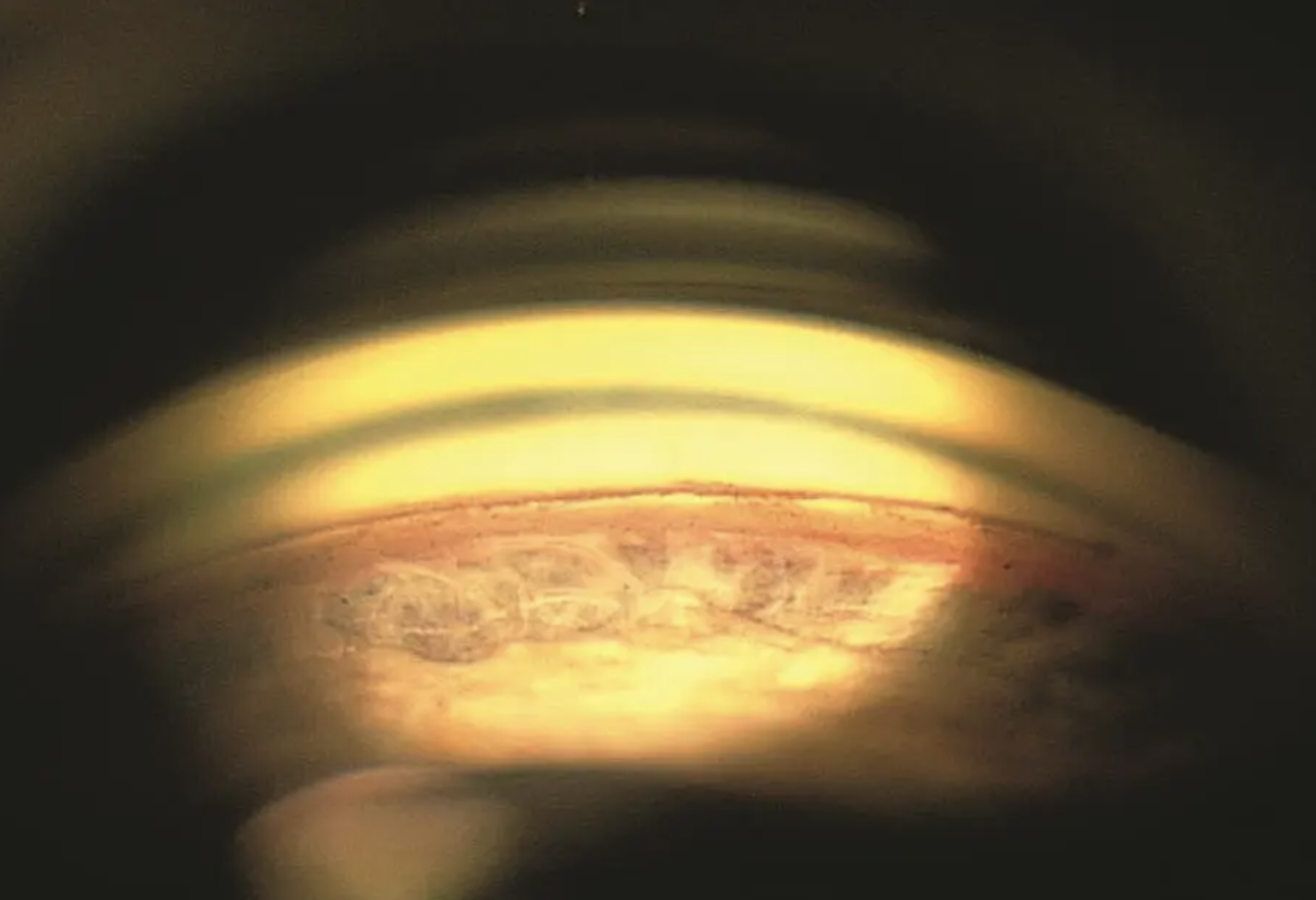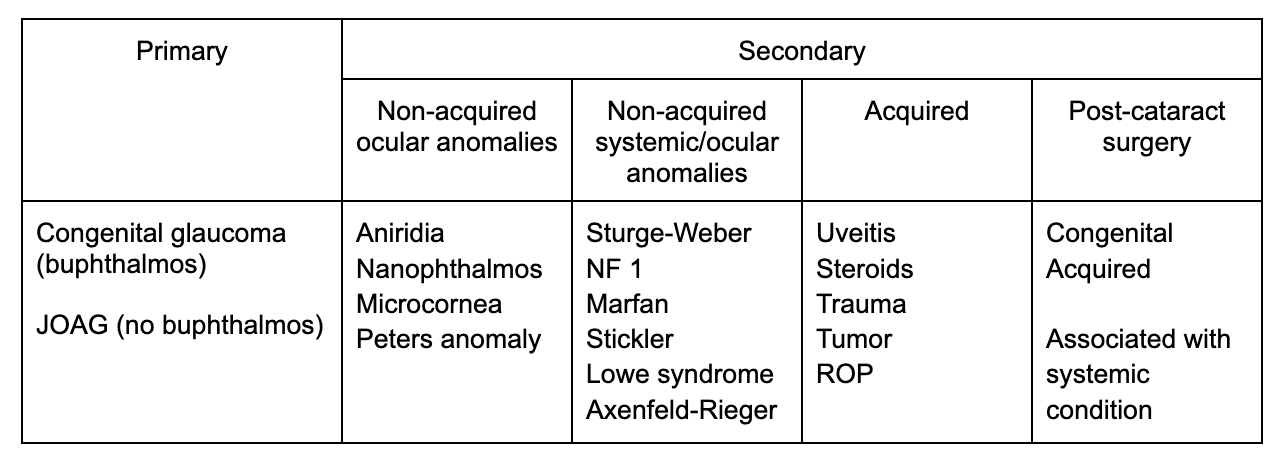Patient has glaucoma. What more do you need to know?
It’s easy to categorize glaucoma. Ask yourself three questions:
Is the angle open or closed?
Is anything causing the glaucoma other than glaucoma?*
What is the stage? (predominately based on visual field findings - early, moderate, advanced, severe, end-stage - get the scoop here)
*in other words - can we blame the glaucoma on something (secondary) or is there no secondary cause (primary)?
Sometimes there is more than one mechanism at play (it’s fine to call something mixed mechanism but understand which mechanisms are being mixed!) There are many ways to categorize the various open and closed glaucomas. Here is one way:
Open angle glaucoma
Consider whether the pathology is anterior to the trabecular meshwork (pretrabecular), at the trabecular meshwork, or posterior to the trabecular meshwork (posttrabecular).
Closed angle glaucoma
Ask yourself whether the closure is due to an anterior “pulling” mechanism or a posterior “pushing” mechanism. If posterior, assess whether pupillary block is present. Only angle closure with pupillary block may benefit from a laser peripheral iridotomy.
Primary angle closure: break it down
Primary angle-closure suspect (PACS) is defined as non-visibility of the trabecular meshwork for 180° or more in the absence of PAS with normal intraocular pressure (IOP). Primary angle closure (PAC) can be further classified as appositional or synechial.
Primary (appositional) angle closure refers to an eye with raised IOP (>21 mm Hg) associated with obstructed filtering trabecular meshwork of more than 180° in the absence of PAS, disc damage, or field changes.
On the other hand, primary (synechial) angle closure (PAC) refers to an eye in which portions of the anterior chamber angle are closed permanently by PAS with more than 180° of iridotrabecular contact with or without raised IOP.
The term primary angle-closure glaucoma (PACG) is used to denote PAC eyes with glaucomatous optic nerve damage or visual field loss.
A note on pediatric glaucomas
Kids are not just little adults, and pediatric glaucoma eyes are not just little eyes with glaucoma! If you have the pleasure of meeting a pediatric glaucoma specialist, please bow down at their feet. They manage some of the most challenging cases of glaucoma and are fighting a noble fight.
The Childhood Glaucoma Research Network (CGRN) has an internationally agreed upon classification system which can be accessed here. Briefly, it considers primary and secondary categories of glaucoma, and secondary glaucomas are further subdivided into four categories (non-acquired ocular anomalies, non-acquired systemic/ocular anomalies, acquired etiologies, and post cataract surgery). For all diagnoses it is important to evaluate the status of the angle (open or closed) as this has important implications for treatment.
Here is an abbreviated chart to demonstrate how pediatric glaucomas can be organized; this is by no means an exhaustive list.





